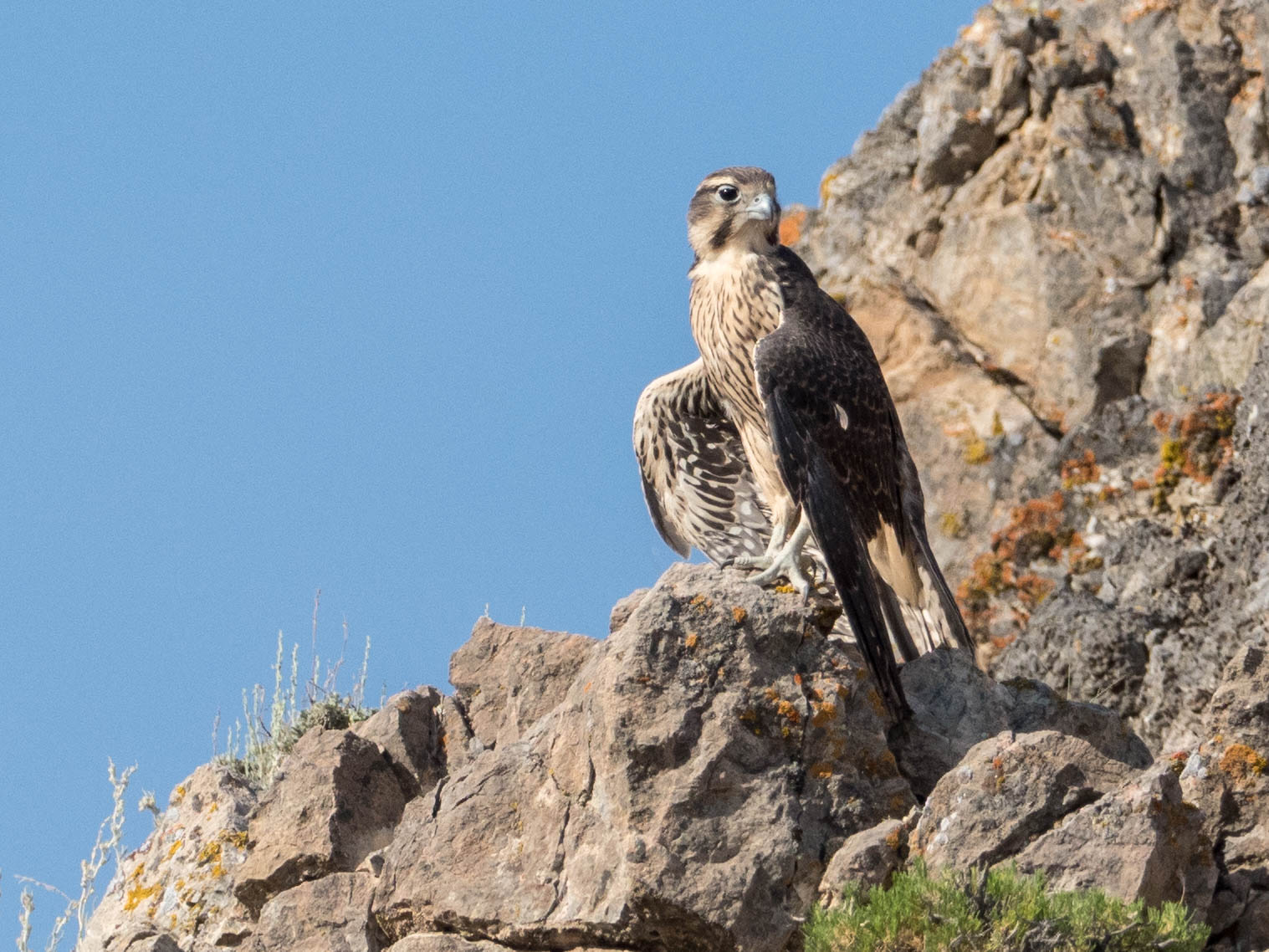For over 20 years, volunteers with Utah’s Raptor Inventory Nest Survey organization have been collecting data on Utah birds of prey and their nesting sites.
The initiative began in 2000, when RINS founder Dawn Sebesta heard that due to funding cuts, the Bureau of Land Management was going to have to end an ongoing raptor nest monitoring program in Toole, Rich, Utah, and Juab counties. Sebesta volunteered to carry on the monitoring herself, and recruited others to help. The organization grew and continued, even after Sebesta passed away in 2003. Now the program enlists hundreds of volunteers each year to collect data all over the state.
Anyone with an interest can participate, and there will be an online training on Monday, Feb. 6 for volunteers who can commit to checking in on an assigned area twice a month from March through July.

Retired geologist Tim Heaton lives in the Moab area and this year will be his fourth participating in the survey. He first heard about the program from a friend in a hiking club, and his interest was piqued.
“I’ve never been an avid bird watcher, but I kind of enjoyed doing it,” he said.
He took the training and a veteran survey volunteer in the area accompanied Heaton and his wife out in the field to demonstrate protocols and answer questions. From there, Heaton said, more practice helped him get a feel for what to look for.
RINS assigns each volunteer an area defined by United States Geologic Survey 7.5 minute quadrangle maps to visit throughout the monitoring season. Surveyors check old nest sites observed in previous years to see if they’re active; they also look for new nest sites. Heaton said that in each of the first two years he participated, he found redtail hawk nest sites and monitored them until the chicks were fledged. Last year he didn’t find any hawk nests, but he did come across a raven nest and a group of baby ravens on the ground learning to fly—a friend also tipped him off to the location of an owl nest.
Heaton said watching raptors in flight and seeing where they go is a good way to find nest sites, which can be in trees or in canyon walls. He noted that it’s important to keep a good distance from nests to disturb the birds as little as possible.

“You don’t want to overdo it,” Heaton said, adding that along with keeping his distance, he tries not to visit active nest sites too frequently.
Finding nests also depends somewhat on luck, and on how much time volunteers spend out in their survey area.
“You really have to kind of scour the whole area,” Heaton said. Sometimes he spends a whole day checking old nest sites; other times he’s just checking in on one active nest and spends only a few hours.
Volunteers enter the data they collect into a database, and the information has been used to inform decisions such as the location of power transmission lines, wind farms, and ATV races. It’s also helped inform related research, such as one study examining the effects of cheatgrass on species that raptors rely on for food.
Prospective volunteers don’t need any science background or bird identification skills.
“The only requirement is that you enjoy Utah’s outdoors, particularly remote areas, and possess a desire to help the magnificent birds of prey,” says a RINS press release. It’s also recommended that volunteers have a pair of binoculars, a GPS unit, and a digital camera, as well as an email address.
Surveying can be a new lens through which to explore Moab’s landscape.
“I love the geology and the biology of the desert,” Heaton says—he loves hiking among the pinnacles, arches and canyons. Getting to know raptors, he said, has given him “another cool thing to keep track of out there.”
To learn more about RINS and the volunteer opportunities, visit rins.org or contact the organization at 801-554-0807 or info@rins.org.




